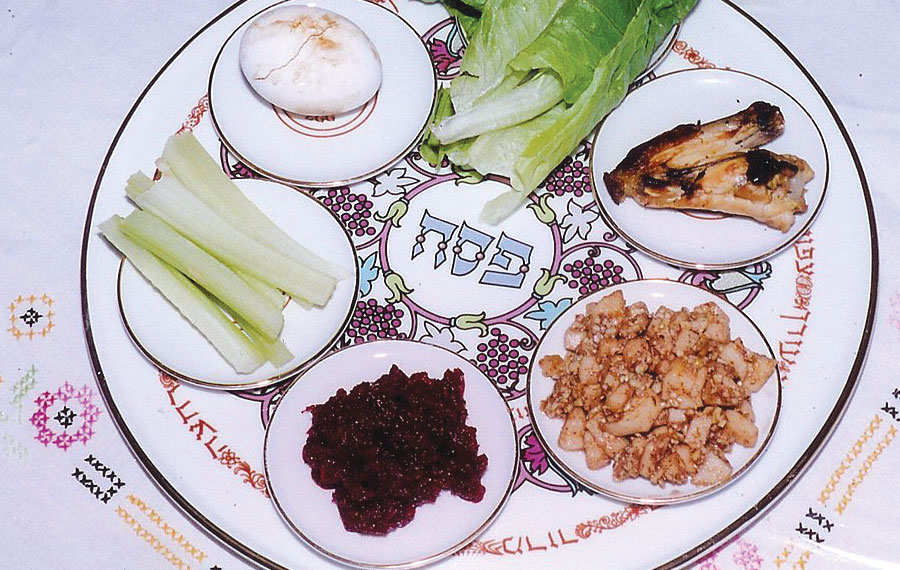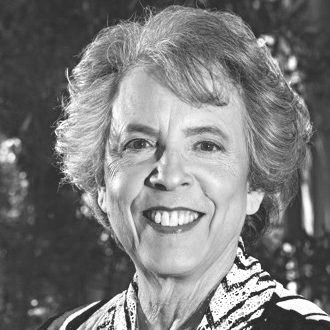
On all other Passovers, we might have celebrated with family and friends. On all other Passovers, memories of growing up around the seder table, once being the one asking the Four Questions, then over the years, sitting in the seats parents and grandparents once sat would have enriched our celebrations.
Not this year.
This year, it is not safe for us to host or be guests at those seders. Should we skip having a seder this year? I don’t think so. Passover is too important to skip and for most of us, the seder is the center of the Passover experience. Passover is the foundation of our Jewish identity. The story we tell through the haggadah is that once, we were slaves, and now we are free; that once we worshipped idols but now understand we are part of the one Power that connects us to every living creature and to the planet that sustains our life.
Passover is the most celebrated of all Jewish holidays, not only because it happens at home, but because it involves what Jews love best: eating and telling stories. It is the story of coming out of a narrow place, mitzrayim; a story that simultaneously unfolds on multiple levels: historical, political, spiritual and personal.
So we will celebrate Passover, but in a different way. We won’t be physically together as long as the coronavirus makes that dangerous for ourselves and for other people. Our tradition gives us the principles that make change possible. The first is pikuach nefesh: To save a life, we can violate any commandment except murder, adultery and idolatry. The second principle is hora’at sha’ah: the extraordinary needs of the hour. Hora’at sha’ah seems to be related to preserving collective Jewish life, while pikuach nefesh is connected to the life of an individual person. Rabbi Abraham Isaac Kook, the first Ashkenazi Chief Rabbi of Israel in the 20th century, argued for relaxing shmita regulations “because of the great pressure of the moment and as a hora’at sha’ah so as not to destroy the Jewish agricultural enterprise.”
Recently, Rabbi Elliot Dorff and Rabbi Pamela Barmash, co-chairs of the Conservative movement’s Committee on Jewish Law and Standards, said that given the current public health crisis, it is permitted to constitute a minyan with individuals connected via videoconferencing.
There are two strategies to handle the unique circumstances this year’s Passover celebration will bring:
1. Pesach Sheni
Reimagine a little-known biblical holiday called Pesach Sheni. We learn about it in Numbers, Chapter 9. There, we are instructed to bring the Passover sacrifice on the 14th day of the first month (Nisan.) But according to the Torah, some Israelites couldn’t bring the offering, either because they had been contaminated by contact with the dead, or they were too far away to come to Jerusalem. Still, they wanted to participate in such an important ritual. They approached Moses and Aaron and demanded, “Why should we be deprived, and not be able to present God’s offering in its time, amongst the children of Israel?”
Moses asked God what to do. The answer was “Speak to the children of Israel, saying, ‘Any person who is contaminated by death, or is on a distant road, whether among you now or in future generations, shall prepare a Passover offering to God. They shall prepare it on the afternoon of the 14th day of the second month (Iyar), and shall eat it with matzos and bitter herbs … .’ ”
This is the only instance of a Torah commandment where there is a “make-up” day. A new ritual came out of a historical incident! It is as though God said, “I will change the rules so you can participate.” Maybe we need to change the rules again. The custom on Pesach Sheni is to eat a piece of matzo. Chametz is allowed in one’s home but not in the seder. There also are some changes in the morning service.
Clearly, Passover is central to the essence of belonging to the Jewish people. What if we said this year, we can’t have our seders at the appointed time, so we’ll have them when it is safe to do so in the future? Maybe in a month on the 14th of Iyar? More likely in the fall, when we hope the danger of being together will have passed. As a liberal Jew, while I understand observing a ritual at its designated time connects us with other Jews, I also believe if I can’t fulfill a mitzvah at its appointed time, it is better to do it at a different time rather than not do it at all.
2. A virtual seder
A virtual seder requires preparation; guests who come virtually also need to be prepared. The host might choose a haggadah and deliver the haggadot to the guests or, better, use a digital haggadah sent to each of the participants. To keep it interactive, assign parts in advance, with different guests responsible for leading different sections. If there are children, keep them engaged by asking them to dress up as a biblical character or maybe as a plague. Perhaps you should encourage all the guests to dress for the holiday, even if they are physically alone in their homes.
Everyone should have matzo and a seder plate with the ritual foods they prepared in their homes. The hosts would send out questions in advance, perhaps focusing on the parts of the haggadah that resonate so powerfully this year: the plagues or dayenu.
The most challenging part of a virtual seder is the meal. While we can’t share food at a virtual seder, we should encourage those people who normally cook to prepare their favorite Passover dishes and describe what they are and why they are delicious. Some virtual seders might keep the videoconference connection live during the meal so people can see one another and have informal conversations; others might turn off the connection and ask people to reconnect at a specified time to finish the seder; others might conclude the seder before the meal.
While a virtual seder is far from ideal, one important benefit is that there is room for everyone. It is particularly important this year that no one who wants to be a part of a seder be excluded. So think about those people you know who are alone and invite them.
Passover is the best version of a Jewish story — from bad news to good news, or as the haggadah states, “from degradation to praise.” And remember, at the end of the story in Chad Gadya, God kills the angel of death. This virus eventually will be contained.
A virtual seder helps us reframe what we all are experiencing. It is not “social distancing.” It is, instead, physical distancing but social connecting: “Let all who are hungry for connection, come and eat.”
Resources: www.hagaddot.com, including its webinar The Art of Virtual Gatherings: Passover 2020. Jewitathome.com
Laura Geller is rabbi emerita at Temple Emanuel of Beverly Hills and co-author of “Getting Good at Getting Older.”























 More news and opinions than at a Shabbat dinner, right in your inbox.
More news and opinions than at a Shabbat dinner, right in your inbox.